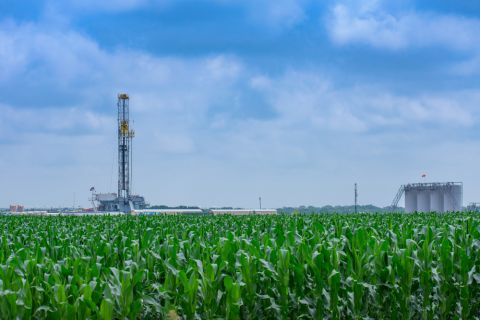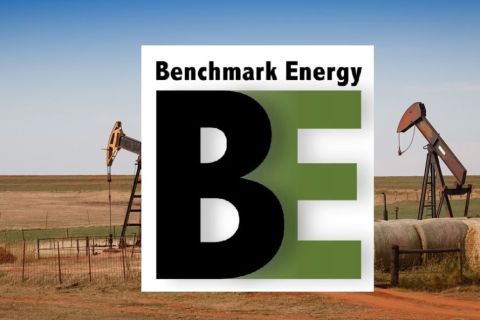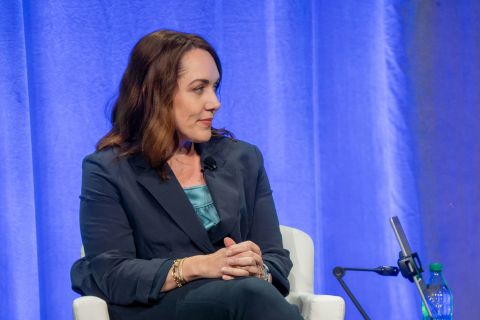The wunderkind brothers behind Rice Energy Inc.’s Appalachian kingdom can’t seem to stand still. Too young to retire and too restless to settle down in one play, Daniel, Toby and Derek Rice have returned to the oil and gas industry, but not with a new start-up as most would expect.
Still in love with the energy business, the brothers are back after their $8.2-billion sale of Rice Energy last year, this time with the launch of Rice Investment Group (RIG). The firm, based in Pittsburgh, will invest in all facets of the oil and gas sector with a $200-million multi-strategy fund.

Daniel Rice IV, who led Rice Energy as its CEO, recently spoke with Hart Energy about the new venture and the Rice brothers’ aim to “mentor and grow start-up oil and gas companies in the same way that we grew Rice Energy from scratch into one of the largest energy companies in the country.”
He and his brothers started Rice Energy in 2007 while still in their mid-20s. The brothers quickly grew the company from a family-owned operation into a billion-dollar enterprise focused on Appalachian shale. They eventually became the youngest management team to have two public companies in the history of the New York Stock Exchange when they took their family’s company and its midstream affiliate public in 2014.
By June 2017, the brothers agreed to sell Rice Energy to EQT Corp.—at a 37% premium to the company’s share price—in what was the most expensive U.S. shale merger last year. At the time of the sale, Rice Energy was producing and gathering more than 2 billion cubic feet per day (Bcf/d) from a 250,000 net-acre position in the Marcellus and Utica shale plays.
Following the close of the deal in November 2017, Rice said he and his brothers, who were still “far too young to retire,” found their way back to where they made their fortune.
As a result, they decided to earmark a decent chunk of their net wealth to put right back into energy, though this time around, they didn't want to be boxed into a certain play or even a particular sector within the industry.
“We definitely had a skill set that was transferable outside of the [Appalachian Basin],” he said. “And I think we were probably a few years ahead of everybody in the way we used technology to manage the business and to develop insights to really grow the business.”
Through RIG, the brothers will target investments of $1- to $40 million across the capital stack in the upstream, midstream, oilfield service and energy technology sectors.
At the same time, Rice said he also hopes to be a resource to help others succeed.
“We want to continue to leave a mark on this industry, for the better. And I think the way for us to do it this time around is to help grow the next generation of leading oil and gas companies,” he said.
Investor What ultimately made you decide to return in this type of financial vehicle, as opposed to exploring and finding resources yourself?
Rice We ran Rice Energy for 10 years as a pure-play Appalachian E&P and midstream company, and I think we did it pretty well. But for better or for worse, public energy companies can get pigeonholed into operating in a certain basin.
Now that we’re out of that world, we’re able to take our skill set and apply it across the entire energy space—E&P, midstream, oilfield services, energy technology, downstream, utilities—anywhere where we think our insights, our experience and our capital can add value.
Investor What are you hoping to provide through RIG that other oil and gas funds may not?
Rice There’s no shortage of money or very smart investors in the private-equity space, that’s for sure, but there remains an opportunity for someone to possess, from the investor side, a deep technical understanding of unconventional development that’s rooted in real-world experience. The niche that we fill is the experience and technical know-how from building one of the pre-eminent energy companies in the shale generation. And so, I think we bring a unique perspective from many sides: the technology side, the geologic side and the operating side. And when you put it all together, I think our fundamental view of what can create value, and most importantly how you get there, is very different in a good way.
The neat thing about our business model is we’re not looking to be the primary sponsor of every single one of the companies we invest in. In fact, we think there will be plenty of opportunities for us to co-invest alongside other firms and contribute our intellectual capital to the cause.
Daniel Rice speaking during a Q&A session at Hart Energy's DUG East conference in Pittsburgh in 2014.

Investor Are you modeled after a particular style of investment firm?
Rice We’re investing across the entire energy spectrum from land and E&P all the way through midstream and downstream and the technology piece. And we intend to invest in other forms of capital, be it debt or public equity, if it makes sense, although I think we can play a more active role creating value in private equity. But at the end of the day, we’re looking for ways to create the most value from our skill set.
Investor Are you planning at some point to invite outside investors to participate in RIG?
Rice This initial fund is 100% our money. We can’t say for sure what the long-term plans will be for the fund. Certainly, our priorities are to put the first $200 million to work and prove to ourselves that we’re capable of making very good risk-adjusted returns. And then we will just see where it goes from there.
I think there are a few good reasons for not taking outside capital today. For one, it takes a lot of the pressure off of us, which is something we learned to cherish after running a public company. Second, we can be a lot more creative and opportunistic with our investment criteria. If you start taking on outside capital, it becomes somewhat more restrictive. Investors, to their credit, need to know what their money is going to be invested in. And there needs to be a track record to support it.
By design, this fund will probably be one of, if not the most, opportunistic and diverse in the energy space. You can really only do that if you’re using your own money or you have the track record to justify it. Our approach is to start with the former and hopefully achieve the latter.
Investor What shale plays do you definitely want to be in, and what are some that may be less interesting?
Rice I think there are opportunities to create value in every single oil and gas producing basin out there—shale, conventional, whatever. It’s really just a matter of being able to pick your spots to identify where there’s still a lot of value left behind. That’s not unique to us in our perspective. That’s just one of the special things about the industry, that there are always opportunities to create value.
When we look across the country, we’re somewhat agnostic to the actual basins themselves and more specific to really understanding, at least on the E&P side, whether things are being developed the way they should be to optimize value creation. Our prior experience from running an oil and gas company gives us better insight into what’s the real undeveloped value potential.
Likewise, we’re in a position to help develop new technology tools and businesses with the goal to help E&P companies better optimize their execution. Whether it’s downhole or back-office tools, we sort of know where the gaps are within oil and gas companies in the way they manage their businesses. So, there’s a whole suite of products that I think you’re going to see us get pretty deeply involved in developing for the betterment of the industry and the betterment of operators across all basins.
Investor What’s been the response, so far, to companies seeking out funding from RIG?
Rice The response has been fantastic. Quite frankly, we weren’t expecting much of a response. We were approaching this venture as the next logical step in our careers.
But to get the positive response shows just how supportive this industry is of its participants. It’s such a unique industry, to begin with, and it’s a very collegial one across all companies too—even amongst competitors.
It’s a very supportive community of companies from the operators all the way through to the capital providers. Everybody is here to find opportunities to create value, and in this era of shale, there’s no shortage of opportunities. We’re excited to do our part by investing in and helping the industry pursue and achieve the most valuable opportunities today.
Recommended Reading
Enverus: 1Q Upstream Deals Hit $51B, but Consolidation is Slowing
2024-04-23 - Oil and gas dealmaking continued at a high clip in the first quarter, especially in the Permian Basin. But a thinning list of potential takeout targets, and an invigorated Federal Trade Commission, are chilling the red-hot M&A market.
EIA: Permian, Bakken Associated Gas Growth Pressures NatGas Producers
2024-04-18 - Near-record associated gas volumes from U.S. oil basins continue to put pressure on dry gas producers, which are curtailing output and cutting rigs.
Benchmark Closes Anadarko Deal, Hunts for More M&A
2024-04-17 - Benchmark Energy II closed a $145 million acquisition of western Anadarko Basin assets—and the company is hunting for more low-decline, mature assets to acquire.
‘Monster’ Gas: Aethon’s 16,000-foot Dive in Haynesville West
2024-04-09 - Aethon Energy’s COO described challenges in the far western Haynesville stepout, while other operators opened their books on the latest in the legacy Haynesville at Hart Energy’s DUG GAS+ Conference and Expo in Shreveport, Louisiana.




